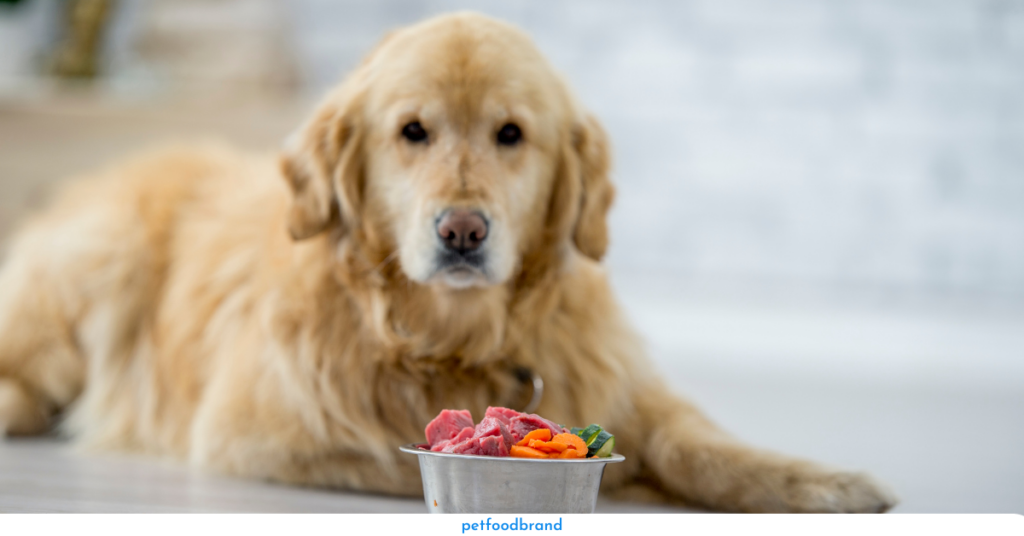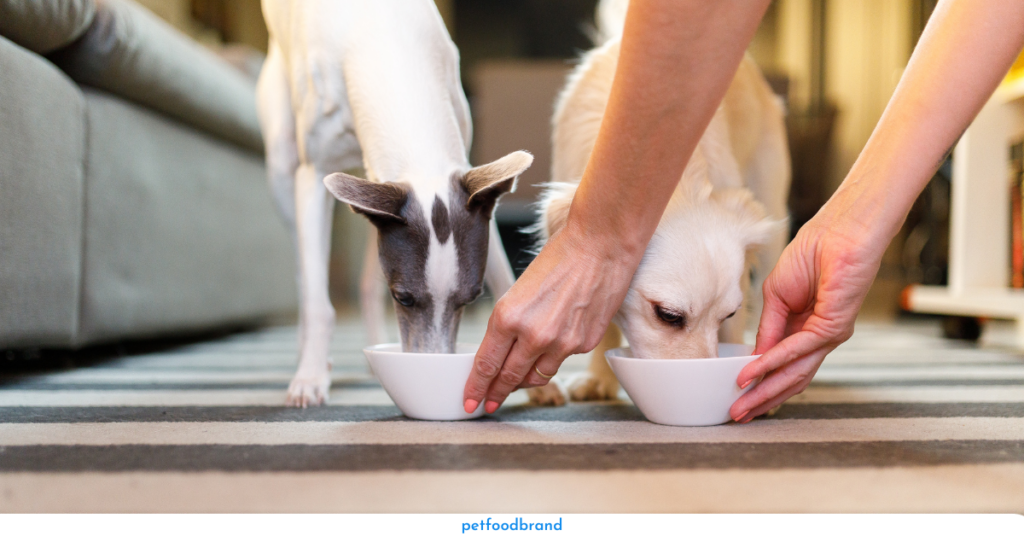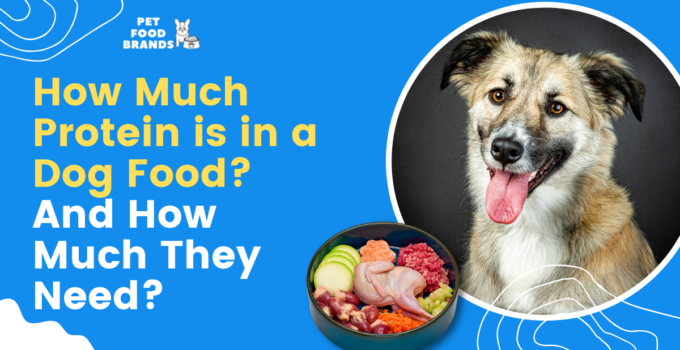One of the biggest responsibilities of being a dog parent is being mindful of your fur baby’s diet. The diet will change significantly depending on your dog’s breed, gender, and whether it is a puppy or a mature canine.
Protein forms an essential part of every dog’s diet. Dogs hunted in the wild are descendants of the wolf family. Hence, an animal-based diet is most suited to them. However, dog food and treats that are commercially available also try to pack in as much protein as possible to fulfill your dog’s daily protein requirements.
Although one diet is not suitable for all dogs, dog foods try to pack in about 12% of the protein requirement per serving. Whether that will suffice for your dog will depend on whether you have a lapdog that spends lounging most of the time or a watchdog or sheepdog bred for outdoor activities and built for muscles.
Your dog can overcome many health issues as they age with adequate protein intake. Understanding how much protein your dog needs can help you plan their diet more effectively.
What is Dietary Protein for Dogs?

Animal diet is often an overlooked subject. Many assume that dogs can survive on anything as long as they have full stomachs. Hence, many pet owners make the mistake of feeding their dogs human food or feeding them processed meat like sausages or bacon.
However, a canine digestive system works differently from a human’s, and its mechanism of absorbing various nutrients is also different. Hence, knowing their dietary requirement is crucial to ensuring your dog’s overall nutrition.
Proteins comprise various chains of amino acids, often known as polypeptides. They are the building blocks of a body’s physical elements, like enzymes, tissues, and organs.
It also results in strong teeth, healthy and glossy fur, and strong dog muscles. For example, a dog’s coat is about 95% protein; protein intake is a must if you have a breed with long fur.
Protein has to be replaced constantly. After all, proteins are consumed by the body faster because they are the building blocks of many hormones and enzyme reactions.
Why is Dietary Protein Crucial for Dogs?
Diets that have low protein can adversely impact your dog’s health. It will slow down your puppy’s growth and development, and older dogs will not have enough strength. It could also lead to weaker immune systems and reproductive failures in female dogs.
Hence, according to the Pet Food Manufacturers Association (PFMA), it is a legal requirement that all pet foods mention the protein quantity on their packaging. And yet, depending on the various pet food brands out there, the quality of protein they provide, and the ratio of protein consumed by the dog, it is impossible to say how much protein your dog gets from various dog foods.
Amino acids from proteins are required to perform many crucial functions. For example, isoleucine helps in healing injured muscles and tissues. If your dog is involved in many activities, this is a must.
Valine improves muscle coordination, while taurine improves heart health. Histidine turns to histamine after metabolism helps the dog respond to allergens and keeps away allergies.
How to Ensure that Your Dog Gets Adequate Protein?

If you give your dog a mix of dog food and home-cooked food, you can ensure that your dog gets adequate protein.
The first step is to know how much protein your dog needs. If you are unsure about it, take your dog to the vet. They will tell your dog’s protein requirement based on their breed, age, gender, and overall health.
Choose the brand of dog food that you feel is reputed and safe. Review the instructions and nutritional value on the packaging and check how much protein each serving has.
Next, if you give home-cooked food to your dog, like boiled chicken or beef, measure how much protein each serving has. The same goes for a plant-based diet, like soybeans.
Add up the protein from all the various foods you have chosen. With a little bit of calculation, you can figure out in a few days how much protein you have been serving your dog.
You can then increase or decrease the various foods to reach their daily protein requirement. Once you have arrived at the desired figure, stick to the diet, and you will be able to easily ensure your dog’s protein intake.
You can also use this method to ensure that your dog is getting all the other nutrients in equal measure.
How Much Protein Does a Dog Need?
As mentioned earlier, a lot depends on the age, breed, gender, source of protein, and overall health of the dogs. However, as a general rule of thumb, these are some figures that experts have determined.
- Puppies and female dogs of child-bearing age need about 22 to 25% protein.
- An adolescent dog needs about 20% protein.
- A moderately active adult dog would need about 18% protein. If the dog is a large breed, the amount would increase to 22%.
- Senior dogs require about 28% protein in their diet.
Checking the packaging of your dog food before purchase can help you measure how much your dog could be getting from it.
Why is Protein Intake Essential for Your Dogs?

Dog’s bodies produce certain chemicals and amino acids on their own. However, most of them must be supplemented by regular protein intake from high-source protein food.
A dog’s digestive system breaks down amino acids during metabolism, and they are responsible for healthy bladder function and proper digestion. Over 20 essential amino acids are required in the process, and your dog’s body cannot make most of them on its own.
Hence, they need a protein-rich diet to get their dose of amino acids. They include Arginine, Histidine, Isoleucine, Leucine, Lysine, Methionine, Phenylalanine, Threonine, Tryptophan, and Valine, among others.
What are Some Other Sources of Proteins for Dogs?
Apart from dog food, some other protein sources can fulfill your dog’s dietary requirements. Chicken is one of the best sources of amino acids. In addition, you can also feed your dog turkey, duck, beef, lamb, pork, venison, rabbit, eggs, and fish like tuna or salmon.
These are animals high in protein, fibers, and a certain amount of carbs. You can give it to your dog, boiled or raw, in case they are on a carnivore diet. However, it is always a good idea to consult your vet about the kind of diet you are providing your dog with.
FAQ’s
If you have a dog at home, having some questions about their protein intake is natural. Here are some answers to help you understand better.
Why do senior dogs need more protein?
Senior dogs find it more difficult to gain muscle as they age. Hence, along with exercise, they also need sufficient protein to ensure that they keep gaining muscle. Or else they would get a skin and bones appearance as they age.
Do dogs with any health conditions require more or less protein than others?
Yes, dogs with certain health issues may require less or more protein than other dogs. It would be best to take a dog to a vet to check this out. For example, a dog with chronic kidney disease requires less protein than other dogs.
Does activity level determine a dog’s protein requirement?
Yes, activity levels determine a dog’s protein requirement because more activity requires stronger muscles, and you need proteins. Hence, breeds like Huskies and Border Collies require more protein for stronger muscles and energy.
Conclusion
Your dog is like your baby; you will only want the best for them. While it is okay to indulge them at times with treats, it is important to follow a diet plan to ensure that their daily nutritional requirements are met without fail. Premium dog food brands use high-quality protein, sourcing it from the best places.
You can experiment with some dog food brands before finalizing which works best for your dog. You will see the results with how glossy their furs become or how active they are. Eventually, you will determine what works best for your dog, and bringing them up would be a breeze.

Ankita is a passionate pet lover and head of content at Pet Food Brands. With her extensive knowledge and research, she provides pet owners with top-quality information on dog food and nutrition. Her dedication to improving the lives of dogs makes her a leading voice in the industry.




